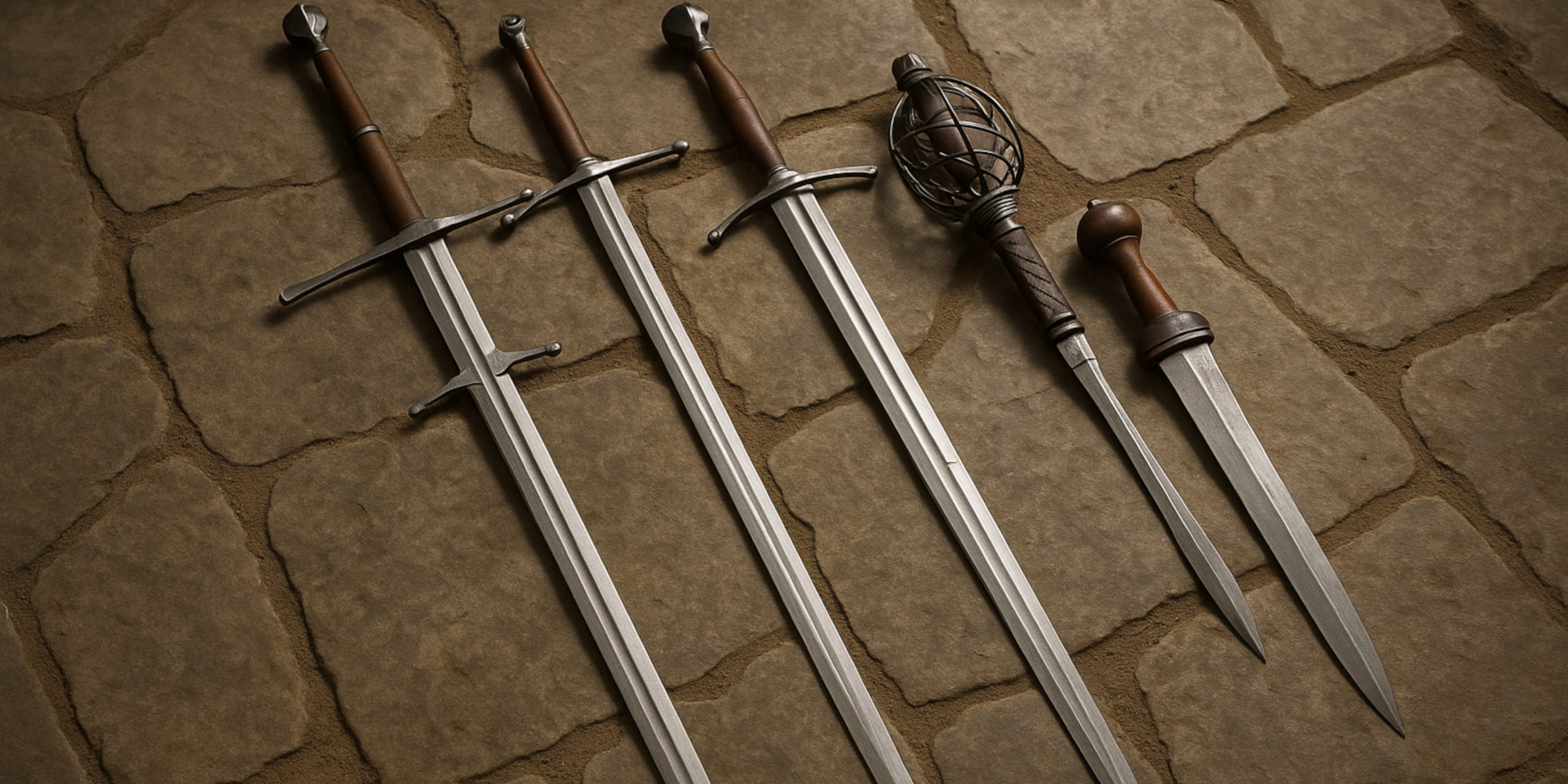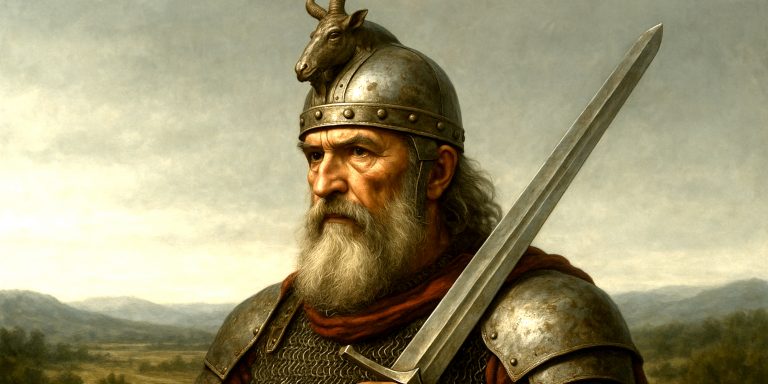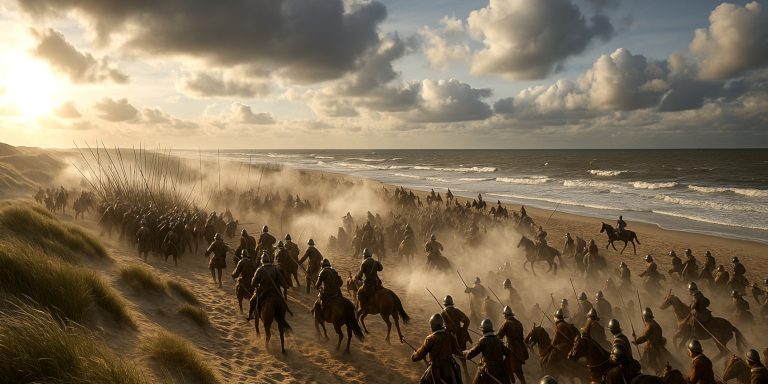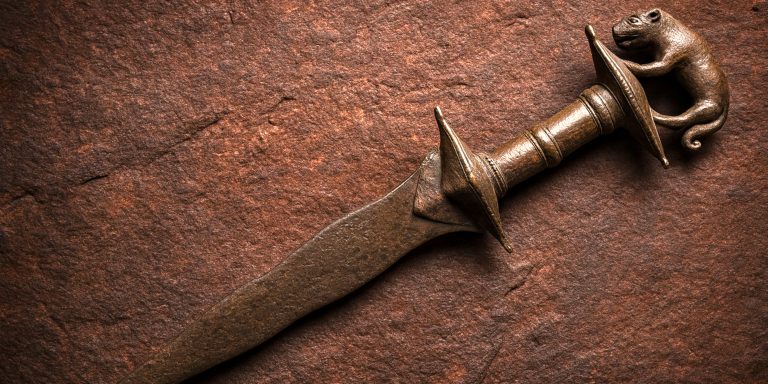
Europe has produced a wide range of sword designs, each shaped by the needs of its time and region. From the finely-balanced longswords of the late Middle Ages to the brutally efficient gladii of the Roman legions, European blades represent a rich blend of battlefield function, metallurgy, and cultural identity. This article ranks some of the most iconic European swords based on historical performance and the quality of craftsmanship.
1. Oakeshott Type XVIIIb Longsword
Era: 15th century
Origin: Western Europe (Germany, France, England)
Highlights: Excellent balance, reinforced thrusting tip, complex hilt design
This type of longsword, popular among knights in the late medieval period, was optimised for both cutting and thrusting. Typically featuring a diamond cross-section and a strong central ridge, it was well suited for use against plate armour. High-end examples often used high-carbon steel and demonstrated refined forging and heat-treatment techniques.
2. Ulfberht Sword
Era: 9th to 11th centuries
Origin: Frankish Empire
Highlights: Crucible steel composition, superior purity, early high-carbon edge retention
Marked with the “+ULFBERHT+” inscription, these Viking Age swords were forged using steel with remarkably low slag content, likely imported from the East. Their construction offered both resilience and cutting power that far surpassed most contemporary weapons. The name became synonymous with elite status and superior craftsmanship.
3. Gladius Hispaniensis
Era: 3rd to 1st century BCE
Origin: Iberia, adopted by Roman legions
Highlights: Lethal thrusting ability, compact form, robust design
Originally used by Celtiberian tribes, the Gladius Hispaniensis was adopted by Rome due to its devastating efficiency in close combat. Its short, pointed blade was designed for rapid thrusts behind the Roman scutum. Forging techniques were advanced for the period, especially in later models manufactured in specialised Roman armouries.
4. Italian Cinquedea
Era: 15th century
Origin: Northern Italy
Highlights: Ornate design, wide blade, effective for civilian defence
Though more of a sidearm than a battlefield weapon, the cinquedea stands out for its decorative appeal and urban utility. Its wide blade made it surprisingly functional in close quarters, while its construction often displayed high-end embellishments and fine work from Renaissance cutlers.
5. Estoc
Era: 14th to 16th centuries
Origin: France, England, Eastern Europe
Highlights: Specialised thrusting weapon, armour-piercing design, strong taper
Designed to counter plate armour, the estoc featured a narrow, stiff blade with a pronounced taper. It lacked a cutting edge but excelled in concentrated thrusts capable of exploiting weak points in armour. Forged to high tolerances, it often required expert tempering to maintain rigidity without becoming brittle.
6. Scottish Claymore (Highland Two-Hander)
Era: 15th to early 17th centuries
Origin: Scotland
Highlights: Long reach, momentum-based power, distinctive forward-sloping quillons
The claymore was built for power. Its long blade and two-handed grip gave Highland warriors the advantage of reach and striking force. While less refined than the precision longswords of the continent, well-made claymores were durable and effective in open-field combat.
7. German Zweihänder
Era: 16th century
Origin: Holy Roman Empire
Highlights: Exceptional length, battlefield control, specialised guard elements
Used by elite mercenaries such as the Landsknechts, the zweihänder was a massive sword requiring strength and training. It could parry polearms, break enemy lines, and control space in dense formations. These swords often featured parrying hooks and ricasso sections for half-swording, showcasing the high level of design and craftsmanship.
8. Falchion (Type 1 and Type 2)
Era: 13th to 15th centuries
Origin: Western Europe
Highlights: Heavy cutting edge, single-edged simplicity, peasant-to-knight utility
The falchion resembles a cross between a sword and a machete. Its forward-weighted blade delivered powerful cuts with minimal effort. Though not as elegant as some double-edged swords, many examples show high-quality steel and careful shaping. Some versions were mass-produced, while others were ornate and reserved for the nobility.
9. Schiavona
Era: 16th to 18th centuries
Origin: Italy (Venetian Republic)
Highlights: Basket hilt, curved blade, strong cut-and-thrust capability
The schiavona balanced aesthetic form with battlefield practicality. Used by mercenary troops of Slavic origin in Venetian service, it featured a protective basket hilt and a sturdy, often slightly curved blade. It represented a transition between medieval and early modern sword-making.
10. Spatha
Era: 1st to 6th centuries
Origin: Roman Empire, later adopted by Germanic tribes
Highlights: Longer than the gladius, versatile in cavalry use, influenced later designs
Originally a cavalry weapon, the spatha’s longer blade eventually replaced the gladius in late Roman legions. It was especially useful in open combat and had enduring influence on early medieval sword forms. While early examples were fairly utilitarian, late Roman and Merovingian versions show more advanced forging and pattern-welding.
The Seven Swords takeaway
Ranking European swords by performance and craftsmanship is inherently shaped by the roles these weapons played in their time. Some were designed to meet the demands of evolving armour, others tailored for swift deployment or civilian defence. But each entry on this list combines intelligent design with the metallurgical skill of its makers, leaving a lasting mark on the history of European arms.



